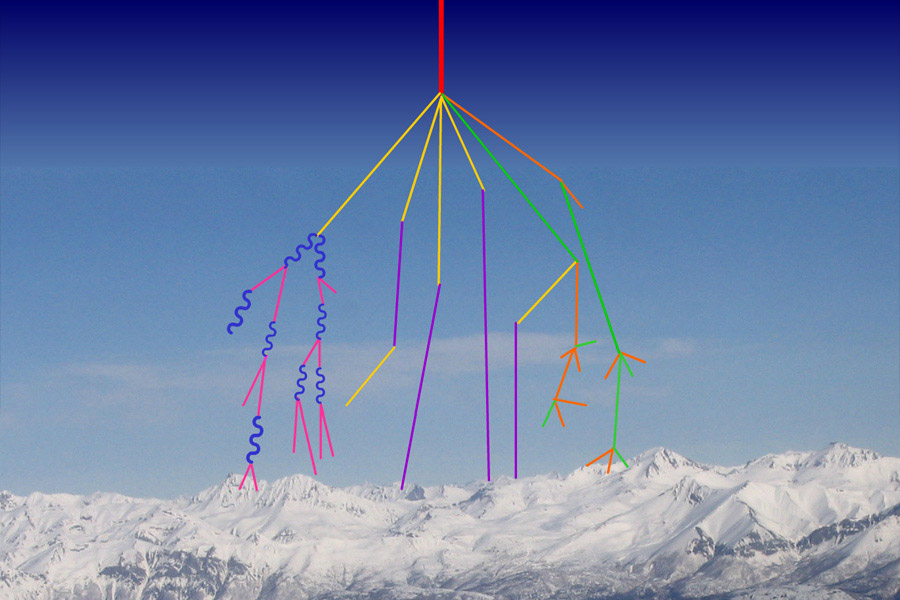Cosmic Ray Air Shower

Photo by Nicole Gordon/UCAR; diagram by Randy Russell/UCAR
When cosmic rays, especially high-energy galactic cosmic rays, strike Earth's atmosphere, they often produce a cascade of secondary sub-atomic particles called an "air shower". This diagram depicts an incoming cosmic ray (in red, at the top) and the resulting air shower which includes protons (green), neutrons (orange), pions (yellow), muons (purple), photons (blue), and electrons & positrons (pink). An actual air shower may consist of millions of particles, depending on the energy of the initial cosmic ray.